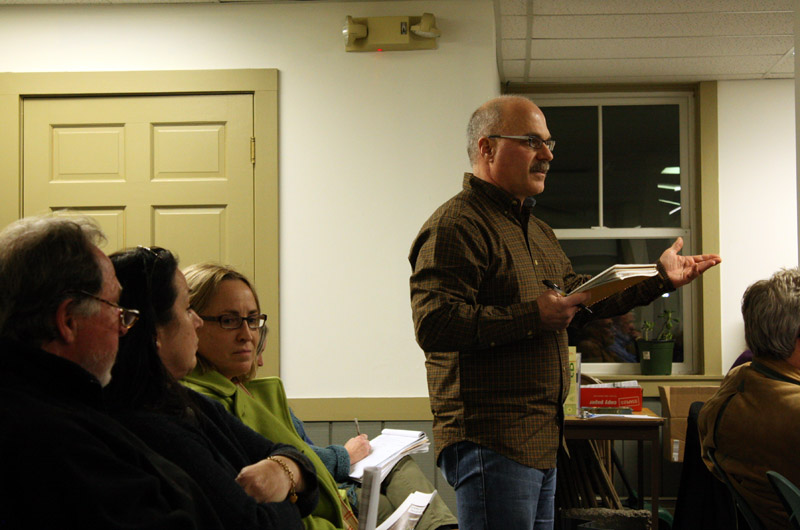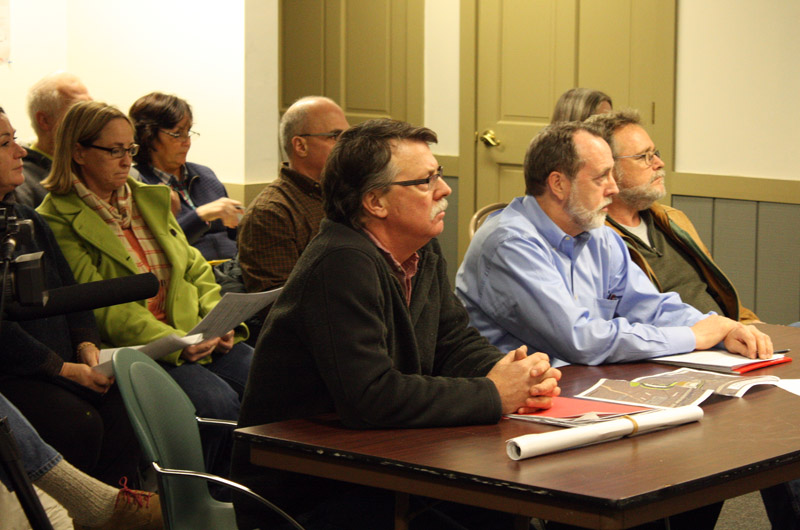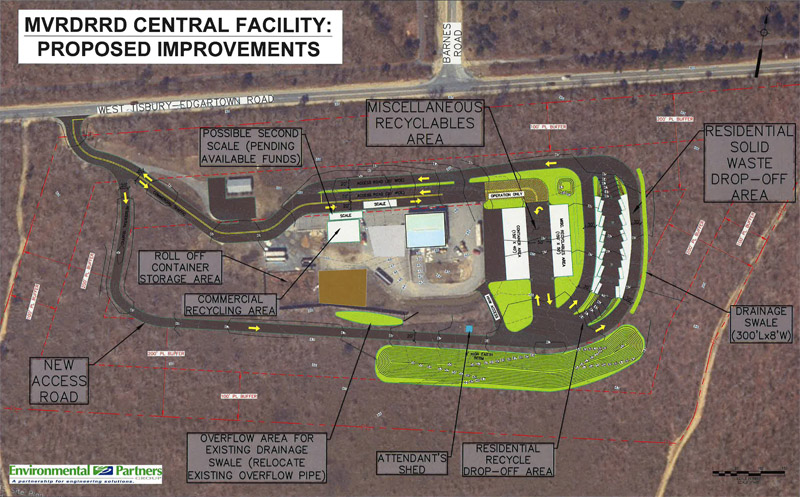More details have emerged surrounding a plan by the Martha’s Vineyard Refuse District to expand its central transfer station. The plan has drawn scrutiny from abutters and the Martha’s Vineyard Commission.
The commission is reviewing the project as a development of regional impact (DRI), but has struggled to get a handle on the somewhat scant details associated with the proposal, developed by the Quincy engineering firm Environmental Partners.

Last Thursday at a third and final public hearing before the MVC, refuse district representatives helped to clarify longer-term plans for the site. Abutters again questioned the scale of the expansion.
The $2.5 million project would feature separate drop-off areas for residential and commercial trash and a new access road around the perimeter of the site, which is bordered by woods on all sides. The cleared area would more than double, to 10.4 acres.
A 20-year bond would pay for the project, which district manager Don Hatch said could start as early as September. A 15-year bond for the existing station was paid off last year. All four member towns, including West Tisbury, Chilmark and Aquinnah, have approved the new spending.
At the hearing last week, abutters reiterated concerns and continued to press for a more modest plan. Tony Bosselait, speaking for the first time, questioned the district’s assertion that cars may be delayed up to 40 minutes in the height of summer, saying he has never seen lines that long.
JoAnn Hathaway again pointed out that the transfer stations in Chilmark and West Tisbury are much smaller and simpler. “This needs a lot more work,” she said of the plan, which has been slightly revised to improve noise dampening and traffic flow in the new area, and to keep the access road out of a 100-foot buffer zone. “It’s just too big.”
Estimates for daily trips at the station have varied. A 2011 study by Environmental Partners estimated that more than 250 vehicles visit the site on a busy day, but Mr. Hatch more recently set the number at around 550. The MVC counted 32 vehicles entering the site over the course of an hour last September, which could translate to 240 vehicles over the course of a daily shift.
Concerns have also focused on future plans for the site, since the proposal leaves room for future development. Mr. Hatch has said that he does not anticipate an increase in traffic to result from the expansion, and he does not propose closing the other transfer stations or consolidating with Oak Bluffs and Tisbury, which manage their own district.

He has said repeatedly that the district has no plans beyond the proposal, although his outlook last week was more open-ended. He cited ongoing efforts by the state to require more waste separation, including a recent ban that applies to businesses producing more than a ton of food waste per week. “It would leave us the space to be adaptable,” Mr. Hatch said, although he stopped short of welcoming a new composting facility at the station. “It’s got to happen somewhere,” he said. “I’m not saying it’s happening here.”
Mark White of Environmental Partners, who has joined Mr. Hatch at the last two hearings, agreed that increasing state regulations had played a role in shaping the plan. He said a greater number of containers would allow for the separation of more materials in the future. “It’s one-stop shopping, so to speak,” he said.
Concerns have focused largely on a proposed entrance road that would enclose a wooded area just west of the existing footprint. After continued prodding from abutters and from commissioners, Mr. Hatch confirmed Thursday that the enclosed area was in fact being set aside for future development.
“In 10, 20 years, and there is no room left on the Island to do anything, are you going to cut down the size of where you’re at?” he said. But he still preferred not to move the road farther east, as abutters have requested and commissioners have recommended. Commissioner Leonard Jason Jr. argued that the only difference would be that drivers would turn right instead of left to access the new area. “That’s all we ask,” he said.
Nils Leaf, who lives closest to the entrance road, wondered why a proposed berm to the east could not be extended or combined with a wall to block noise on both ends of the site. Donald Harrington added that removing more trees in the future would allow the sound to travel even farther. “If there is really no reason to have it, then why have it,” he said of the road.
District committee member Richard Osnoss agreed that the road would be visible to neighbors, but rejected the eastern route. “Any of us, if we ran a business, we would want that road to go out and define the workable space,” he said. But he didn’t comment on what might go there in the future.
He emphasized that public safety was the primary concern in expanding the station, and that all eight members of the district committee support the plan. (Only five had been present to approve it in 2014.) Minor car accidents are now common, especially in the recycling area where cars need to pass each other, Mr. Hatch said.
The new residential area will require another staff member, which drew some concern about added costs. “I wish you could design it so you didn’t need more help,” commissioner James Joyce said. But Mr. Hatch again pointed to the need to monitor what goes into the waste stream. “If we don’t catch it, we get written up when [it reaches] the disposal site off-Island,” he said.
The public hearing was closed; written comments will be accepted through Feb. 25. Comments can be sent by email to foley@mvcommission.org, or delivered to The Olde Stone Building, 33 New York Avenue, Oak Bluffs, MA 02557.
The project will head to the commission’s land use planning committee in March for further review, with a final decision on whether to approve the project expected at a meeting March 17.





Comments (1)
Comments
Comment policy »